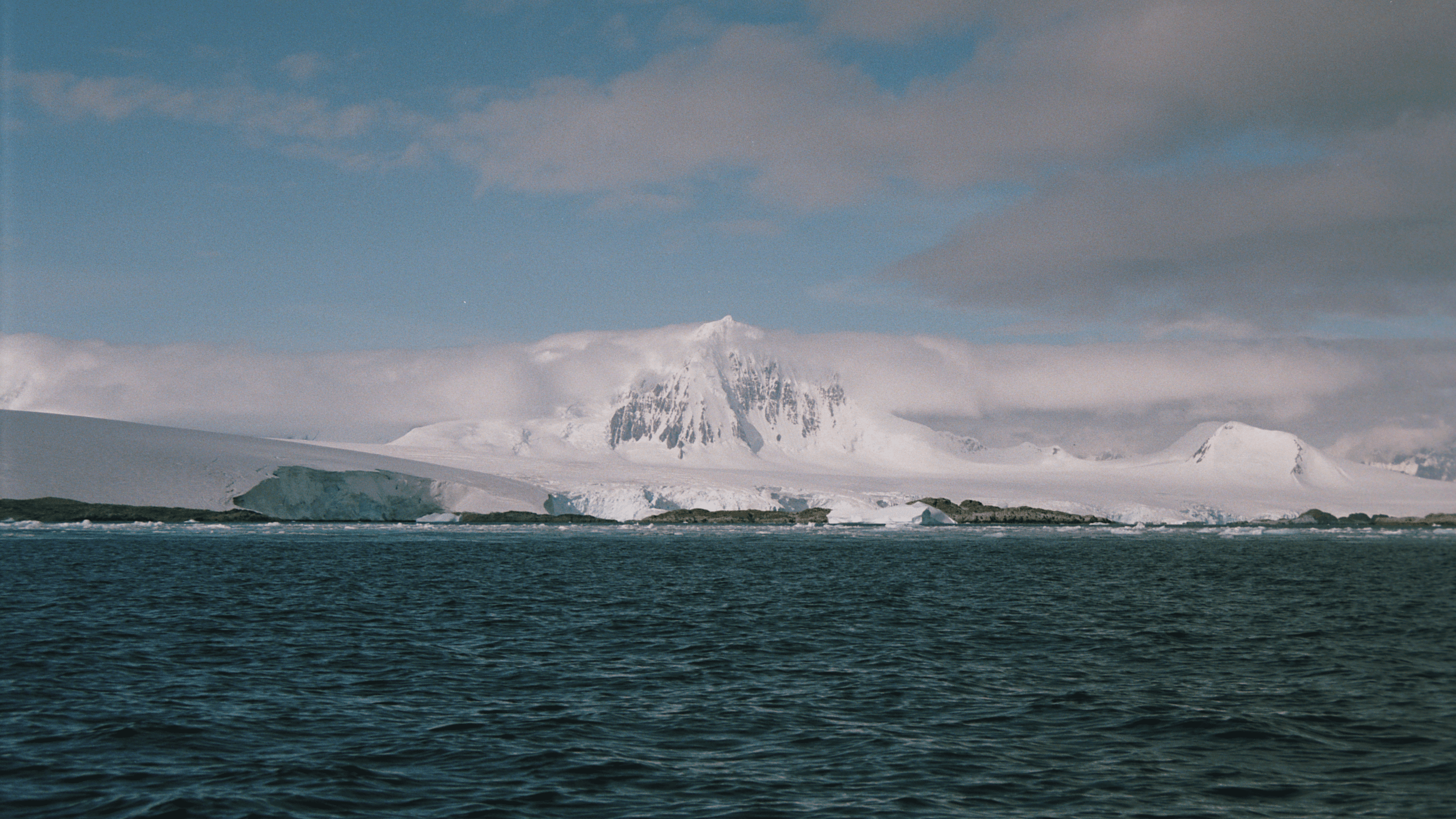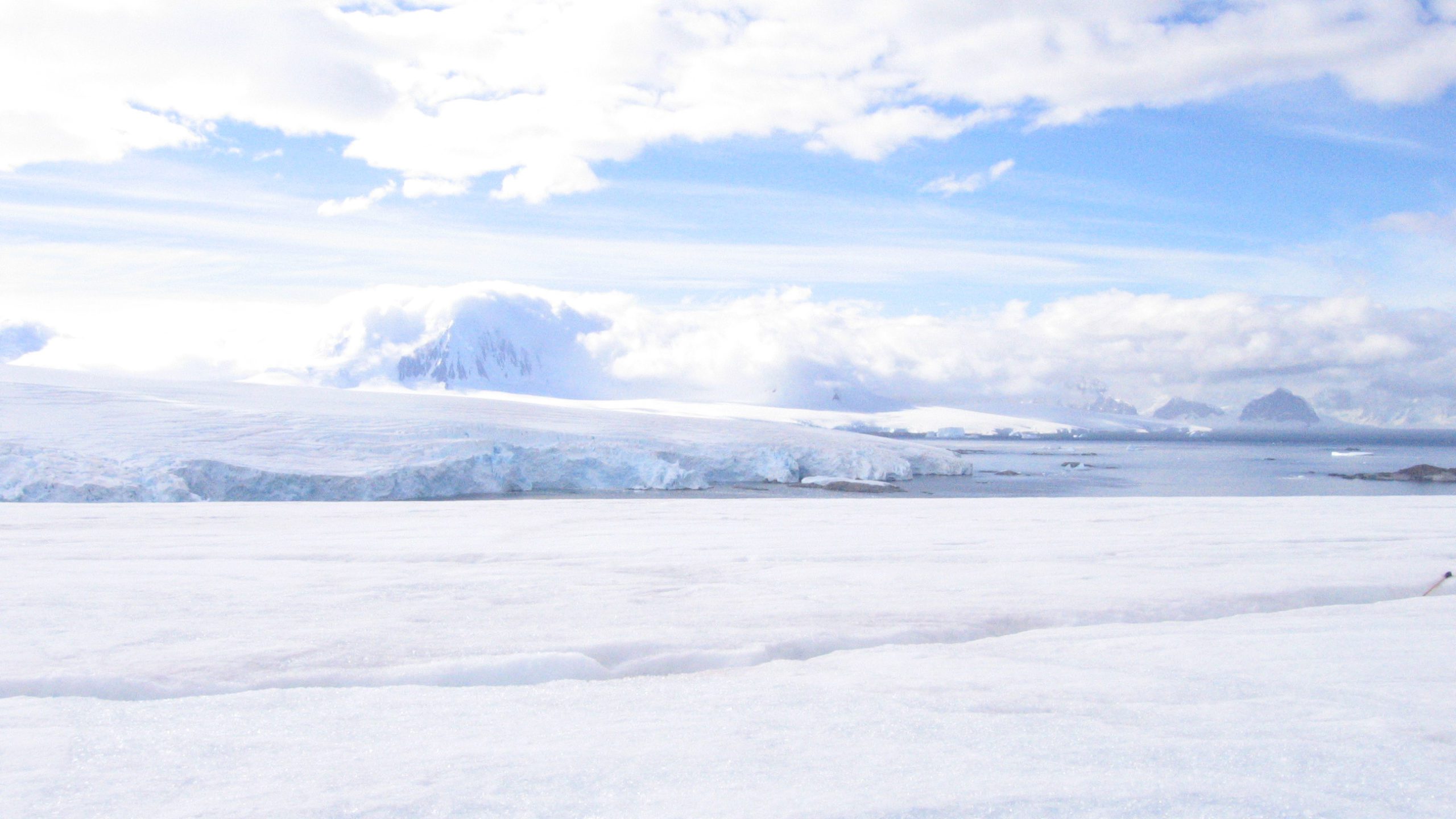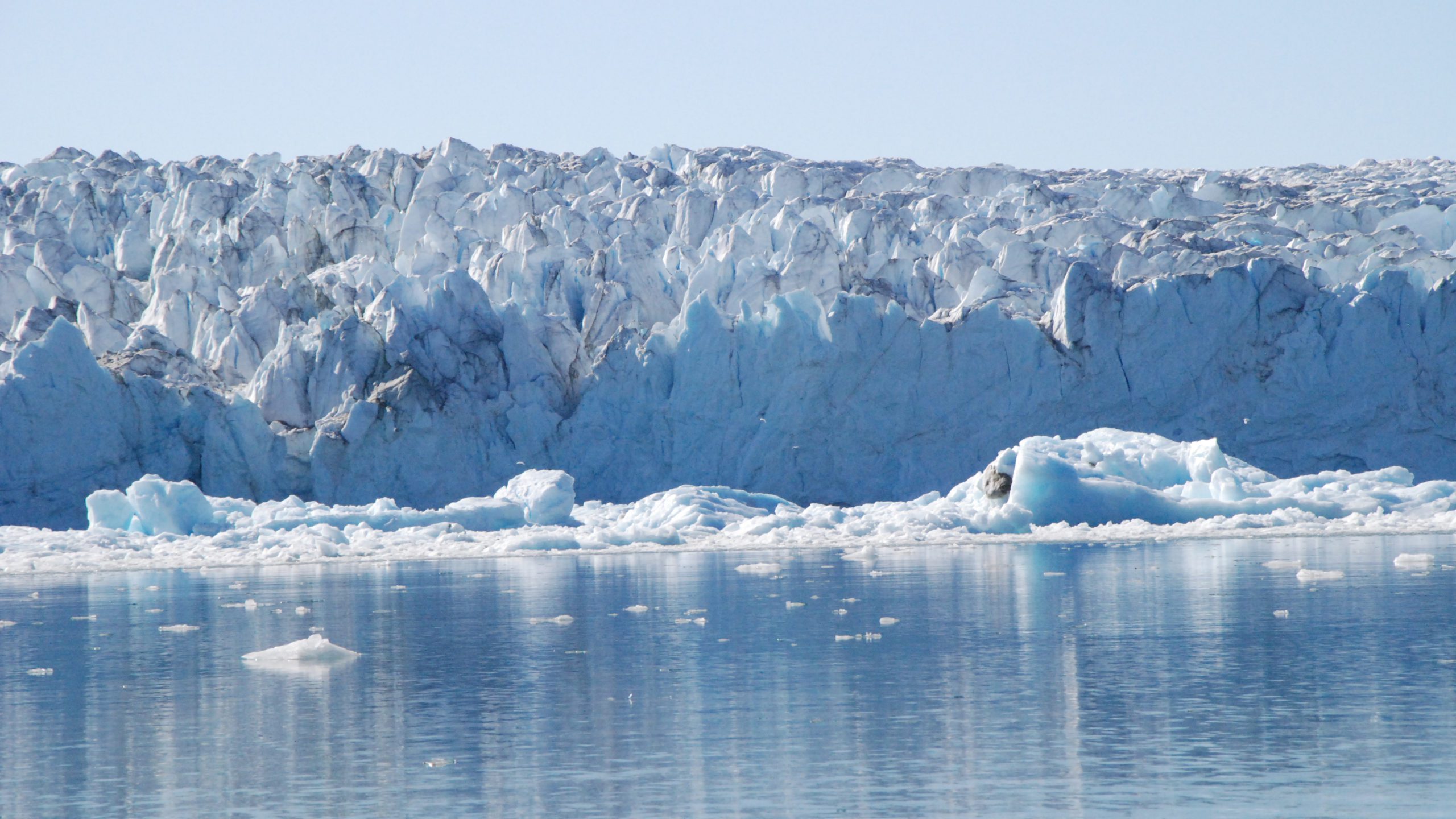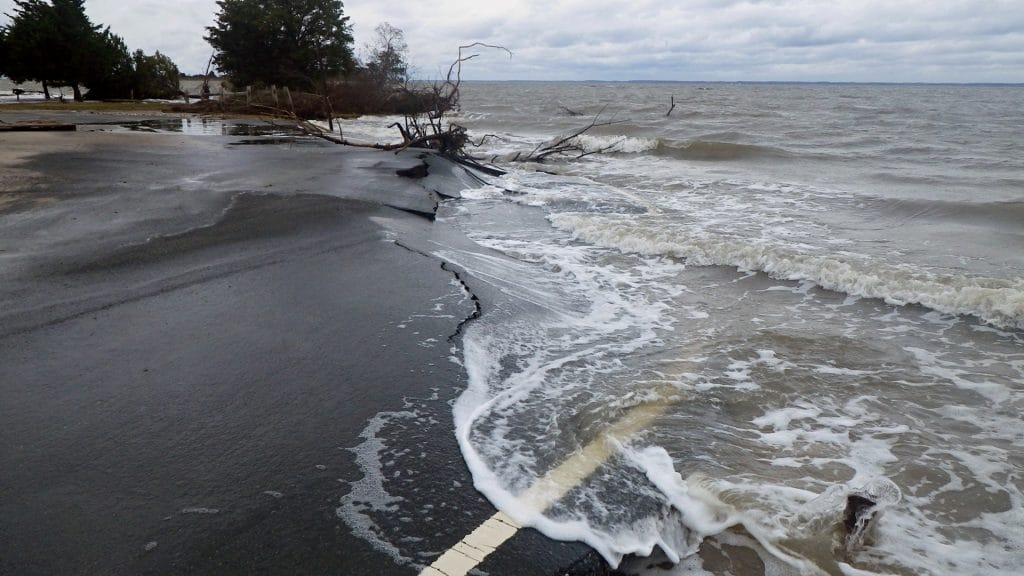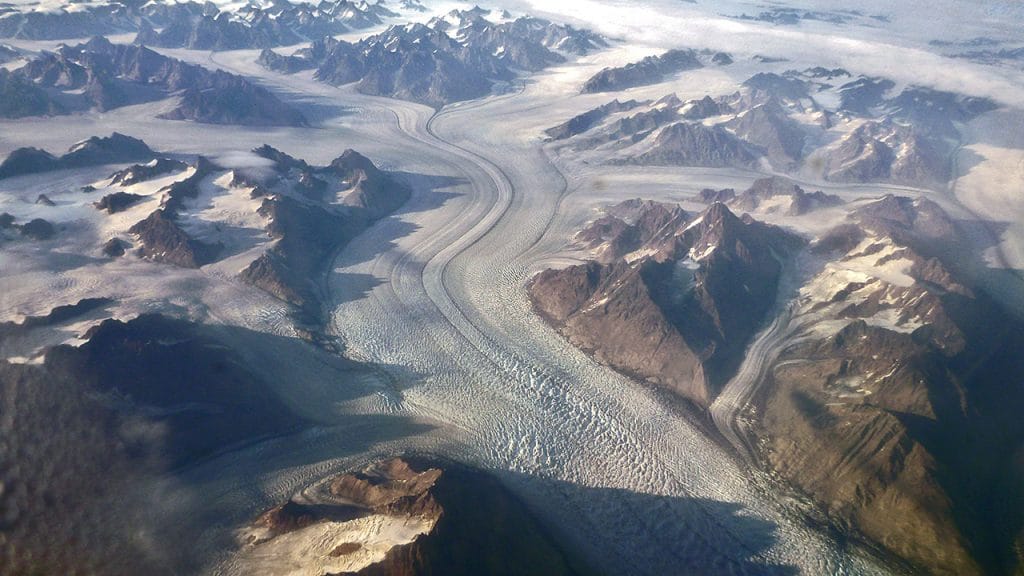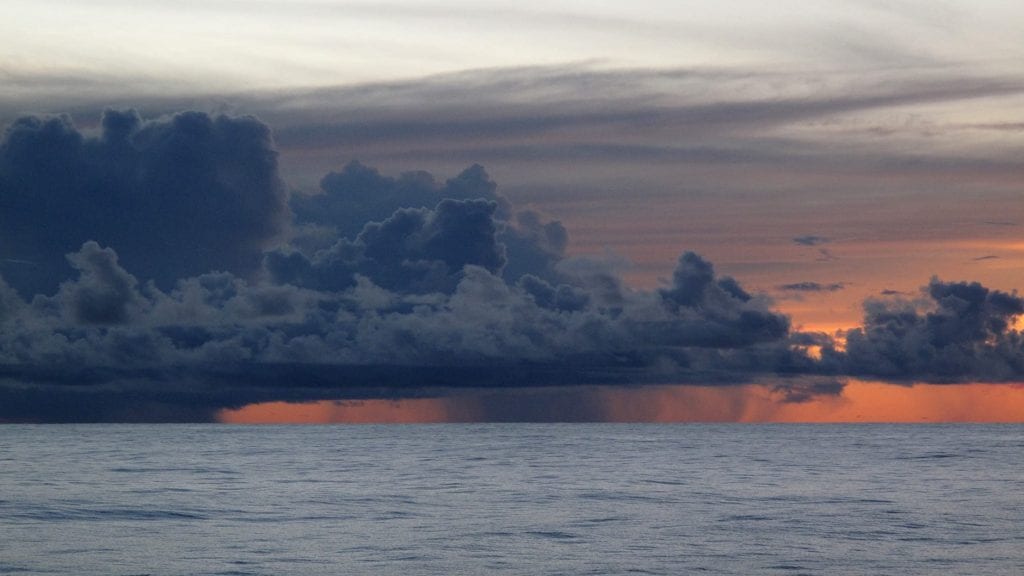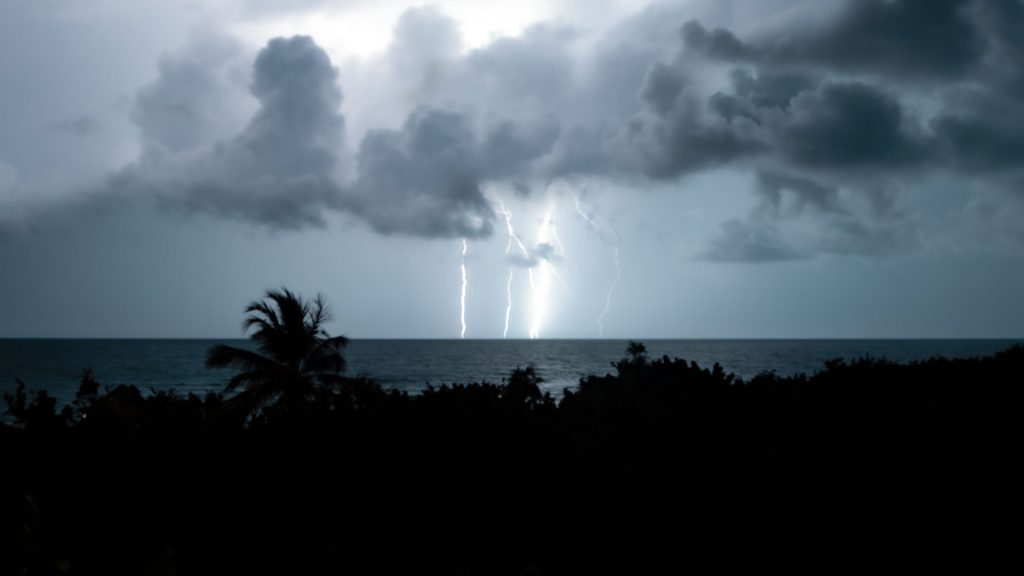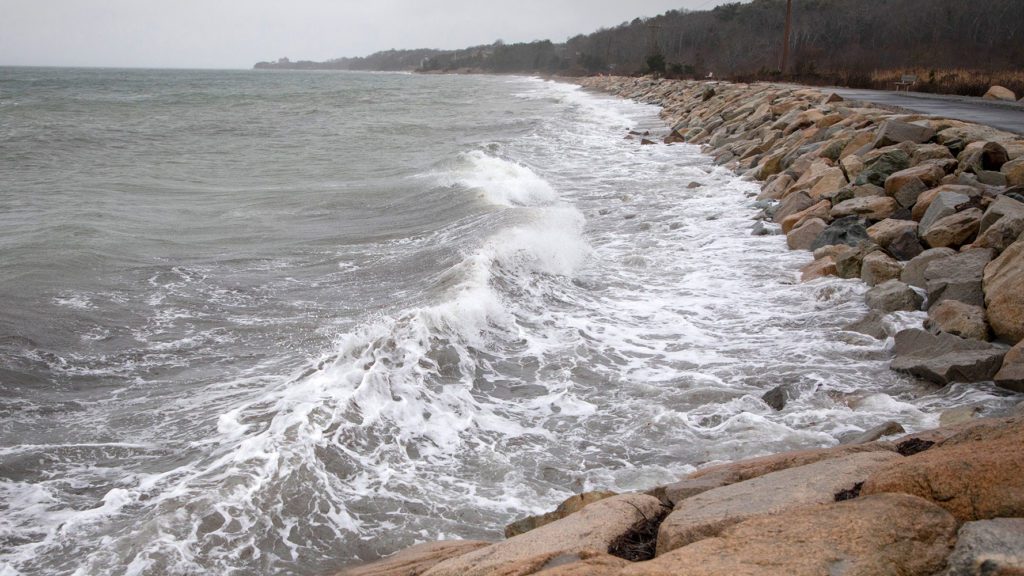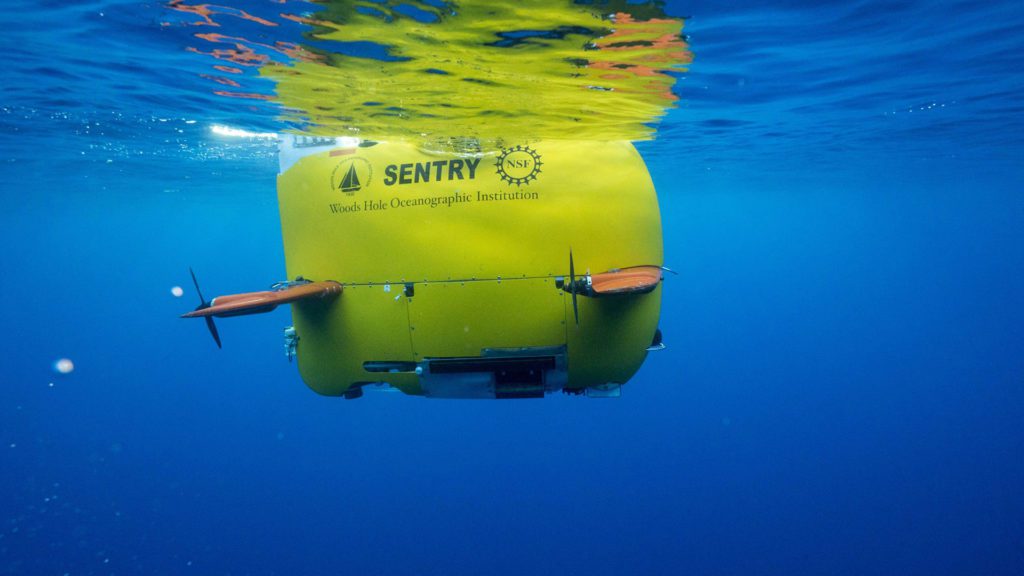Sea levels have risen and fallen throughout geologic history due to a myriad of natural processes, most notably the forming and melting of glaciers. Since the end of the last glacial peak, sea level has risen worldwide on average, but over the past 150 years, the pace of sea level rise has increased as ice melt has hastened and sea water has warmed and expanded.
But oceans aren't rising at the same rate everywhere. Some parts of the U.S. East Coast have experienced a faster rate of sea level rise than other places. During the twentieth century, sea level rose about a foot and a half near the Outer Banks in North Carolina and along the nearby Chesapeake Bay in Virginia. Yet New York City and Miami both saw only about a foot rise during that same time. And Portland, Maine saw only about half a foot of rise.
Glaciers are responsible for much of the global rise we see today. But past glaciers are also causing big differences in sea level rise from place to place.
Glaciers are rivers of ice. You’ll find them in places where snow falls in winter and doesn’t melt entirely in summer. Every year, a new layer of snow covers and packs down the old layers underneath. Over time, the weight of all that snow squeezes the bottom layers into a solid block of ice.
Glaciers are found on mountaintops or near the poles. They can vary from the size of a football field to an ice patch hundreds of miles long. Or they can be even bigger. Enormous glaciers cover Antarctica and Greenland. Glaciers of this size are called ice sheets.
Today, these icy giants are melting because of human activity. Within the past two hundred years or so, human greenhouse gas emissions have risen. This rise has driven up global temperatures, hastening the retreat of glaciers around the world. The resulting meltwater is draining into the oceans and contributing to our rising seas.
But our Earth's glacial past is also playing a big role in local differences in sea level rise. During the ice age, large areas of North America were covered by ice sheets. The biggest ice sheet in North America extended from the Canadian Arctic as far south as Missouri. The ice was up to two miles thick in some places, and extremely heavy.
Imagine dropping a bowling ball onto a mattress. The mattress sinks under the weight of the ball and bulges up along the edges. Ice sheets have the same effect. They push down the land underneath them. At the same time, land around the edge of the ice sheet bulges up. During the last ice, that bulging land included much of the U.S. mid-Atlantic coast.
The ice sheet that covered North America peaked about 26,500 years ago and then melted. Since that time, the land has been gradually rebounding, rising where it had been pushed down, and sinking where it had bulged up. This rebound is a big reason why sea levels are rising fast along some parts of the U.S. East Coast, but not along areas closer to glaciers, like present-day Iceland and Greenland.
RELATED VIDEOS
LEARN MORE
Sea Level Rise
Sea level rise is expected to continue for centuries and may impact human and the natural environment.
Glaciers & Ice Sheets
Glaciers are large ice masses created by snowfall that has transformed into ice and compressed over the course of many years. An ice sheet is a mass of glacial land ice extending more than 20,000 square miles.
NASA. What Causes Sea Level Rise? https://sealevel.nasa.gov/faq/12/what-causes-sea-level-rise/ Accessed on December 7, 2021.
National Geographic. Ice Sheet. https://www.nationalgeographic.org/encyclopedia/ice-sheet/ Accessed on December 7, 2021.
NOAA. How is sea level rise related to climate change? https://oceanservice.noaa.gov/facts/sealevelclimate.html Accessed on December 7, 2021.
U.S. Global Change Research Program. Sea Level Rise. https://www.globalchange.gov/browse/indicators/global-sea-level-rise Accessed on December 8, 2021.
USGS. Glaciers and Icecaps. https://www.usgs.gov/special-topic/water-science-school/science/glaciers-and-icecaps?qt-science_center_objects=0#qt-science_center_objects Accessed on December 7, 2021.
WHOI. Sea Level Rise. https://www.whoi.edu/know-your-ocean/ocean-topics/climate-ocean/sea-level-rise/ Accessed on December 4, 2021.
WHOI. Why Is Sea Level Rising Faster in Some Places Along the U.S. East Coast Than Others? https://www.whoi.edu/press-room/news-release/why-is-sea-level-rising-higher-in-some-places-along-u-s-east-coast-than-others/ Accessed on December 4, 2021.
WHOI. Understanding Sea Level Rise. https://www.whoi.edu/wp-content/uploads/2019/11/File-name-01474-Sea-Level-Rise-Report-final-with-DOI.pdf Accessed on December 4, 2021.
DIVE INTO MORE OCEAN FACTS
What’s the difference between climate and weather?
We often hear about the weather. We also hear about climate. The two terms are related. But they are not the same thing. What’s the difference?
How does the ocean affect storms?
Under the right conditions, some of those storms can grow into large tropical storms. Or even monstrous hurricanes.
What makes the ocean salty?
The water flowing into the ocean comes from freshwater streams and rivers. These bodies of water do contain salt. It dissolves from rocks on land. That’s because rain is slightly acidic.
What are ocean robots?
From the icy poles to sensitive coral reefs, robots empower us to understand more of the ocean than ever before. But just what are they?

